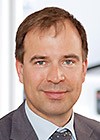
2016
ABOUT iCAT 2016 VENUE OF iCAT INVITED LECTURES CONFERENCE PROGRAMME AWARDS ORGANISERS COMMITTES SPONSORS PHOTOGALLERYiCAT 2016 Invited lectures

Countless organizations of all types and sizes are considering additive manufacturing (AM) and 3D printing—terms that are used interchangeably. They are hard at work trying to understand where it is going and where they fit in. Many are awestruck by the technology and investing large amounts of money. Diegel will underscore some of the developments that have led to this phenomenon and will emphasize some of the most important trends from the recent past. He will also share his thoughts about the importance of Design for Additive Manufacturing as a key to the adoption of AM by industry.

In this talk Ian will cover his experiences in developing surgical solutions using AM technology, with particular emphasis on Oral and Maxillofacial surgery. Such surgical applications are on the increase and there are indications that AM may finally be accepted into the mainstream. However, the implications are far reaching and perhaps more complex than people may initially realise. Ian will discuss these implications in relation to the Australian context.

Manufacturing Technologies of the future - the Collaborative Research Center 814 Additive Manufacturing deals with the basic research of additive manufacturing processes. With additive technologies parts are produced from plastic or metal without any specific tooling. Away from rapid prototyping to manufacturing these technologies, are made fit within the CRC 814 to produce serial components in the desired quality.

Mrs. Andrea E. Reinhardt started in banking, studied at University Mannheim and is working in leading positions in the field of Additive Manufacturing and industrial applications of micro- and nanotechnologies since 1996. In 2001 she co-founded NTC, a company active in the field of Sol-Gel materials used for coating in automotive and construction.

As with all nations, the Republic of South Africa (RSA) has a unique set of circumstances and challenges. Emerging from economic isolation and stagnation, the RSA has some highly developed regions but also some pockets of poorly developed infrastructure. Therefore, developing countries can learn from the way it has sought to modernise its industries and to look for guidance. For the last two decades, AM’s uptake and democratisation has advanced rapidly. Many other countries are following this path of late adoption and so can learn valuable lessons from what has happened in the RSA.



